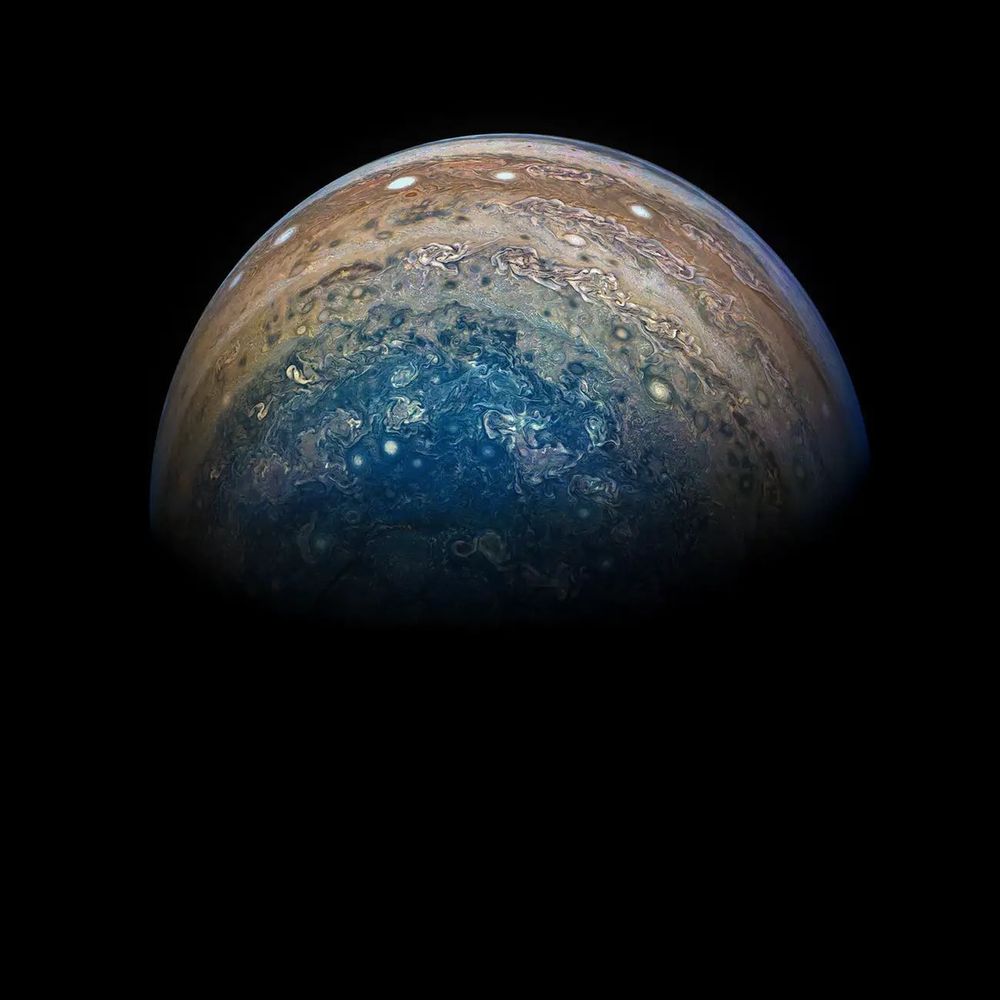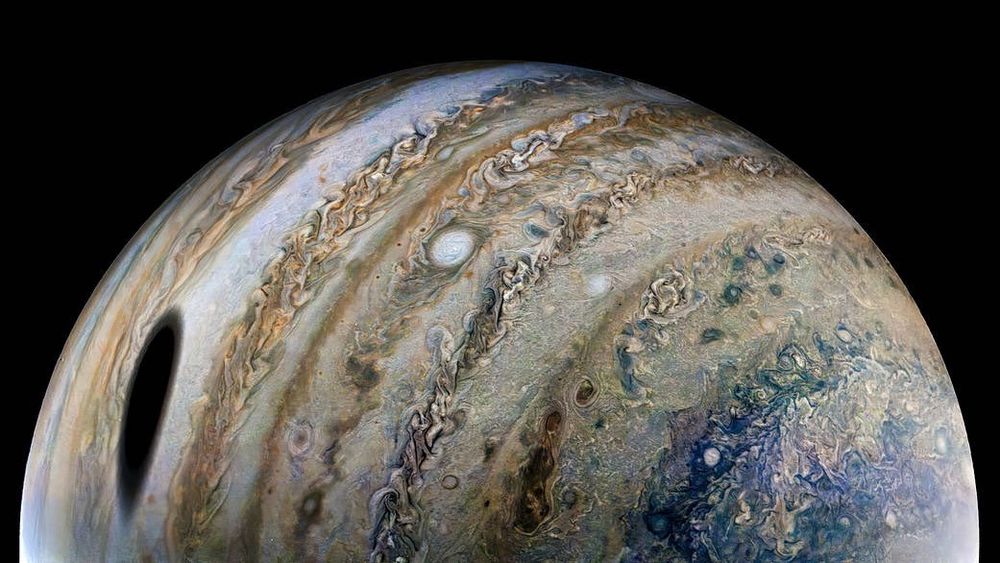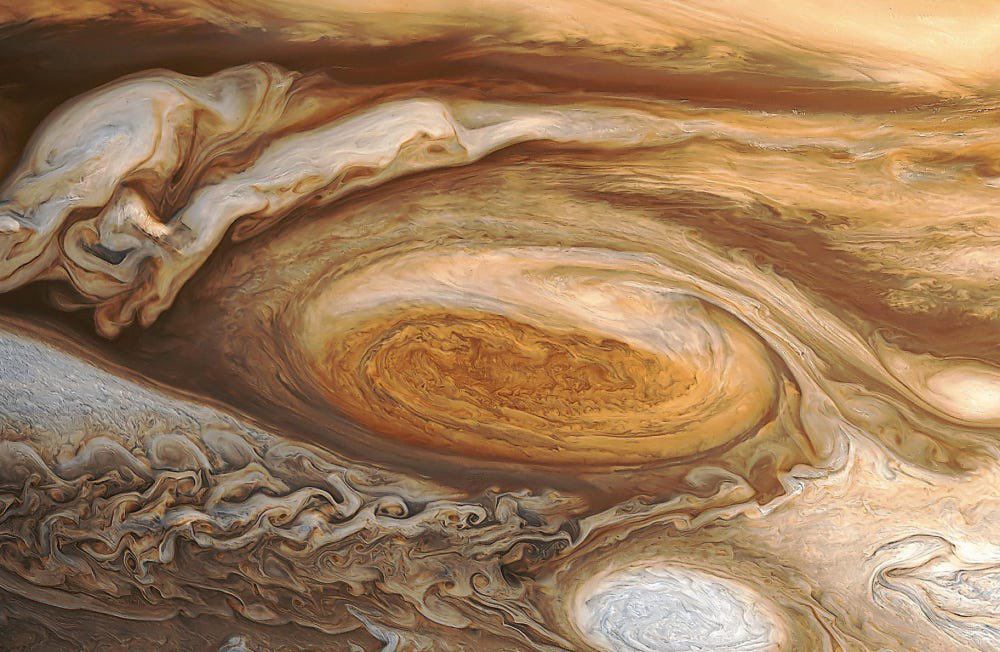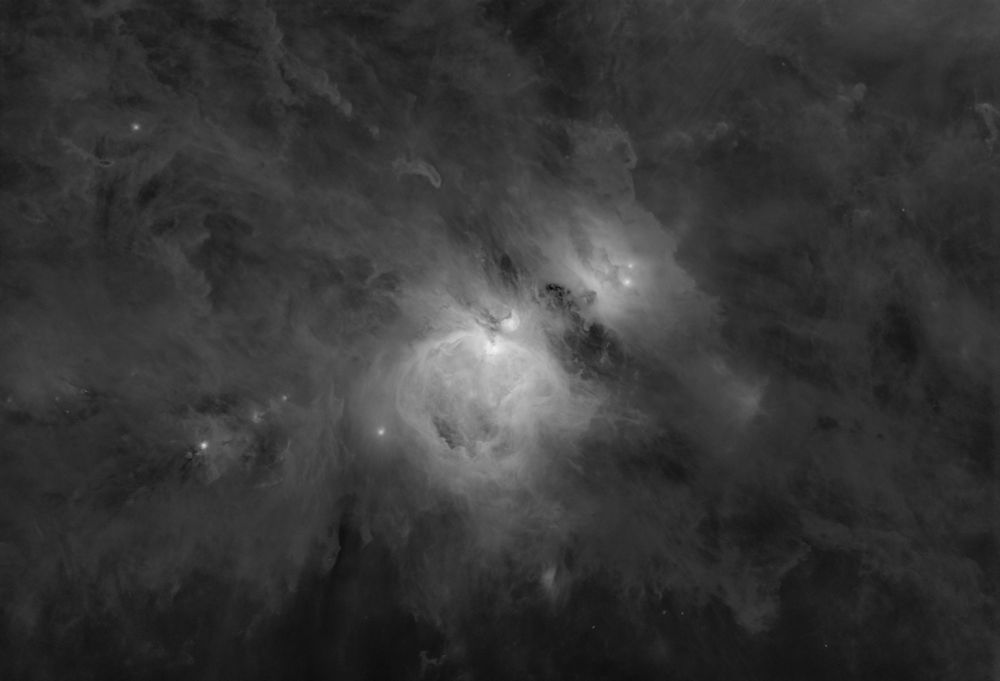
A view taken of one of Jupiter’s polar regions. Swirling cloud formations can be seen in hues of blue, white, and orange. Processing: Gerald Eichstadt/@_TheSeaning

JunoCam captured this image from very close to Jupiter, making Ganymede’s shadow appear especially large. At the time the raw image was taken, the Juno spacecraft was about 44,000 miles (71,000 kilometers) above Jupiter’s cloud tops and 15 times closer to the planet than Ganymede. An observer at Jupiter’s cloud tops within the oval shadow would experience a total eclipse of the Sun. Total eclipses are more common on Jupiter than Earth for several reasons: Jupiter has four major moons (Ganymede, Io, Callisto, and Europa) that often pass between Jupiter and the Sun, and since Jupiter’s moons orbit in a plane close to Jupiter’s orbital plane, the moon shadows are often cast upon the planet. Jupiter’s bands and clouds are visible, making stripes across the planet in various colors of white, orange, and blue on the poles. Image credit: NASA/JPL-Caltech/SwRI/MSSS, processing: Thomas Thomopoulos

Swirling blue and white clouds and storms on Jupiter, resembling paint on a canvas. Image credit/processing: Gerald Eichstädt and @_TheSeaning /NASA/JPL-Caltech/SwRI/MSSS

A close up of Jupiter’s Great Red Spot. Swirling white and brown clouds can be seen around it. Processing: Bjorn Jonsson
if the budget cuts go through for nasa, we’re losing juno, which has given us these gorgeous images of jupiter over the years
04.06.2025 22:59 — 👍 2677 🔁 615 💬 64 📌 17









